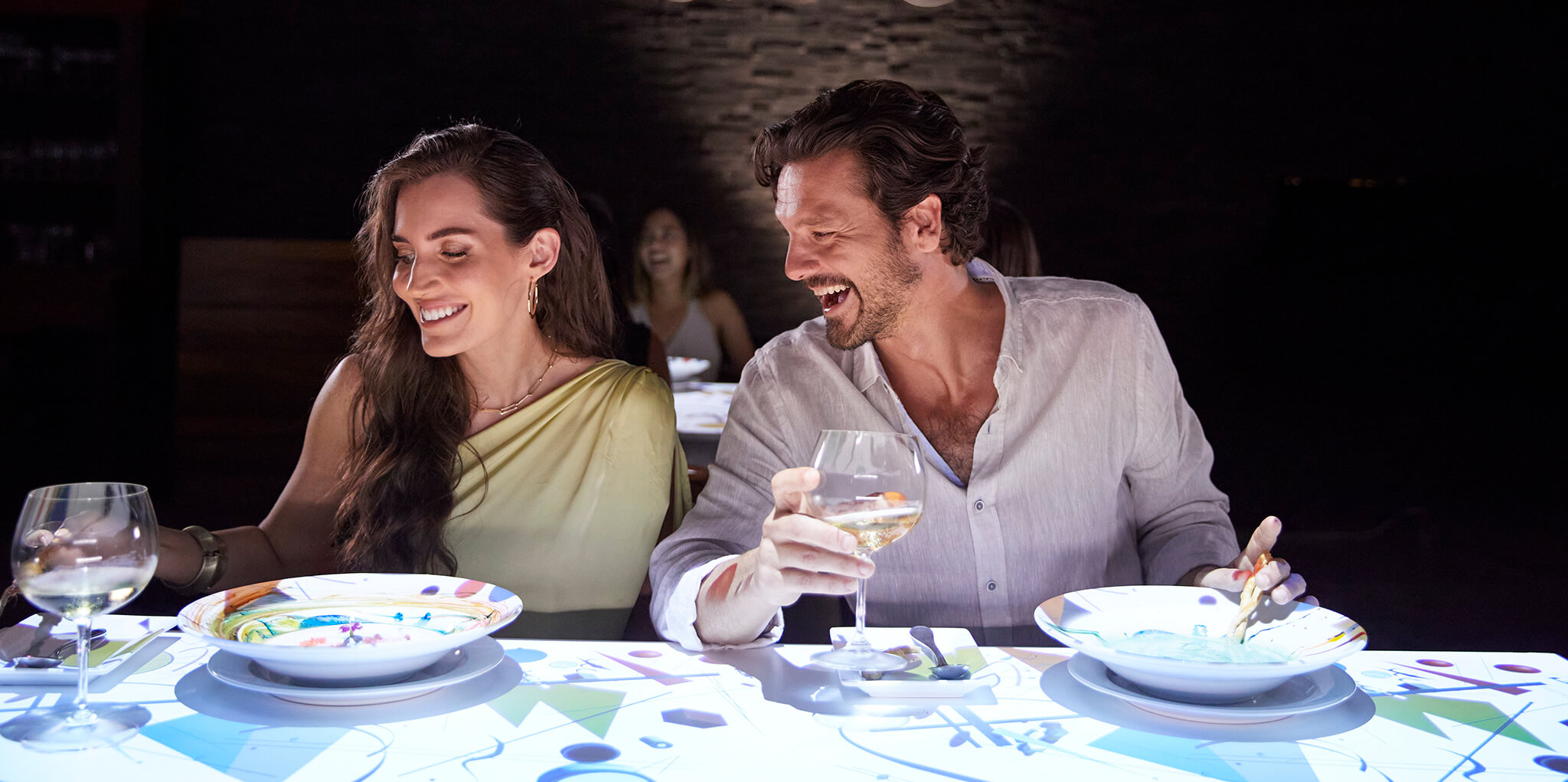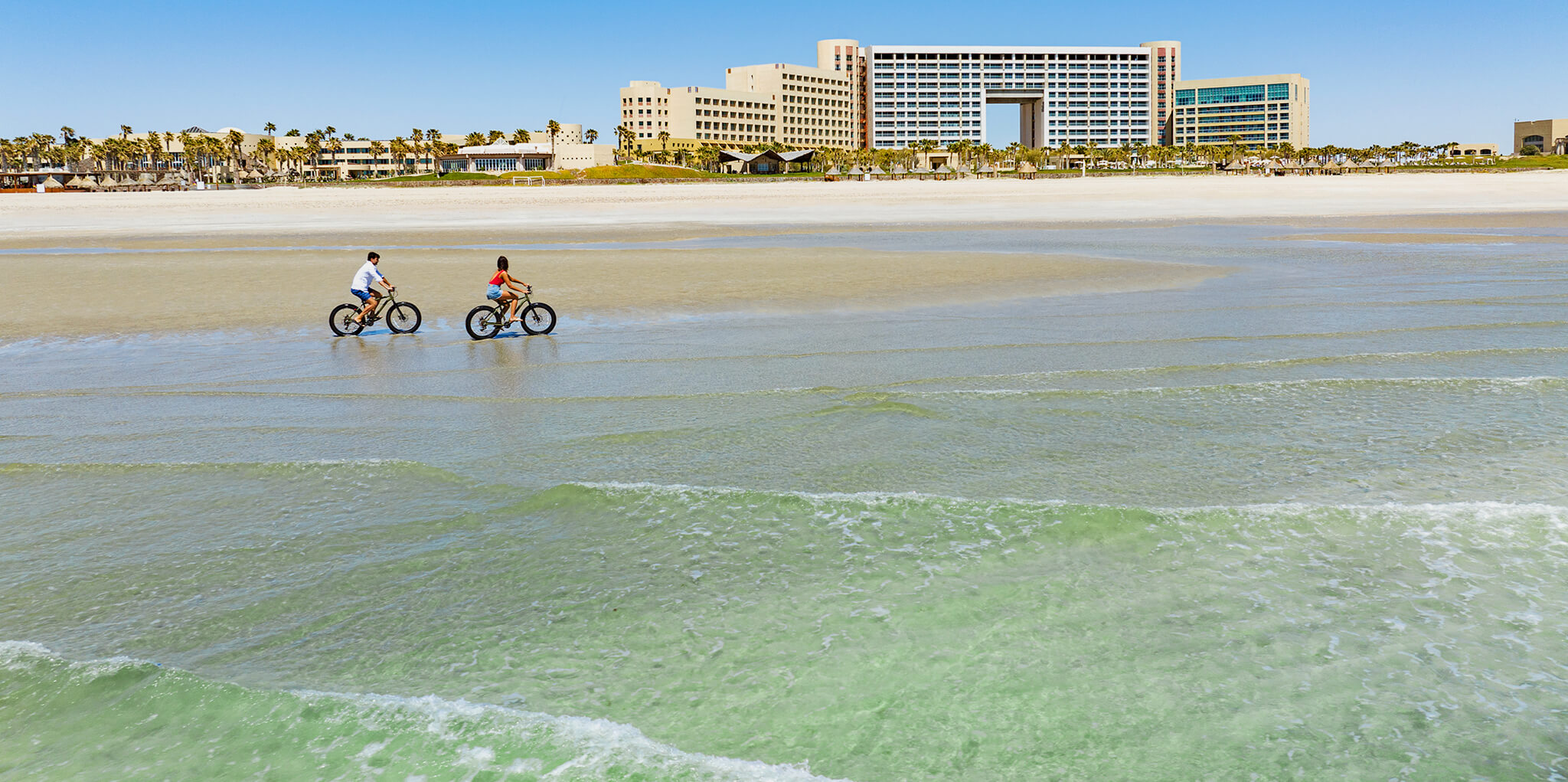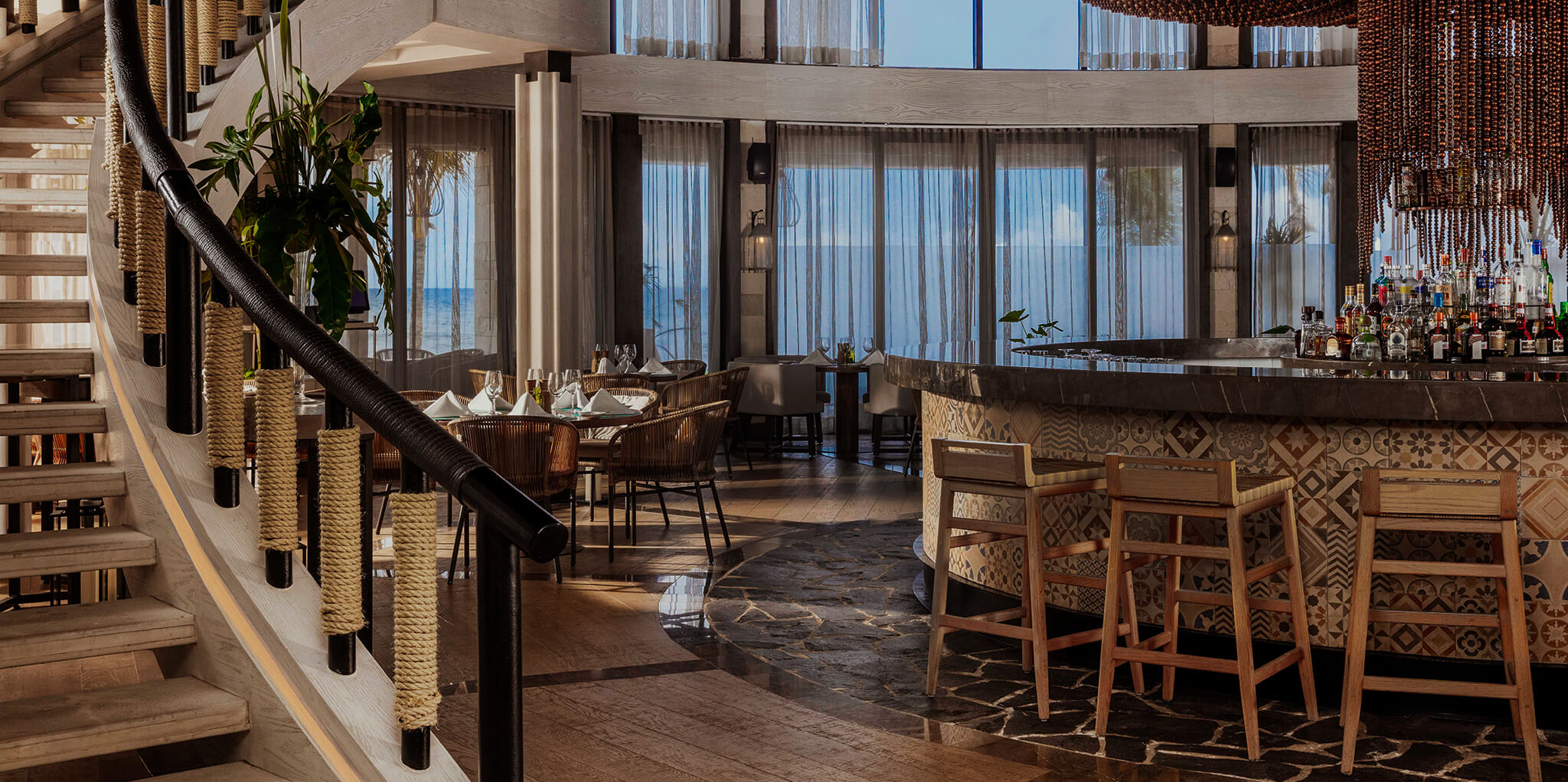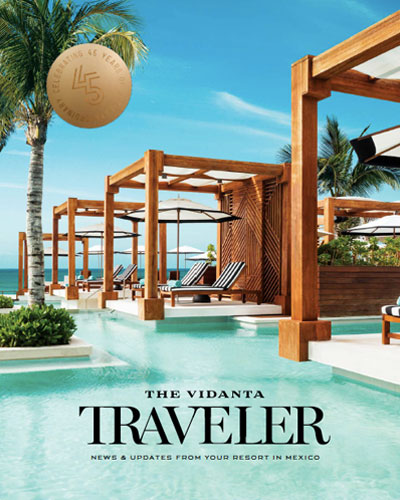On November 2nd, the dead return to Mexico.
But don’t worry! These aren’t the scary spirits you might find on Halloween. Día de los Muertos—Day of the Dead in English—is a celebratory holiday in which the spirits of departed family and friends return for a day to visit their loved ones. Día de los Muertos is a pre-Hispanic tradition, arising from Mayan culture, that survived and adapted to the introduction of Christianity. The result is a beautiful celebration that blends indigenous and European culture, creating a uniquely Mexican holiday. Take a look at a few of Día de los Muertos’s most iconic traditions, and see how Vidanta is celebrating!
Ofrenda Altars
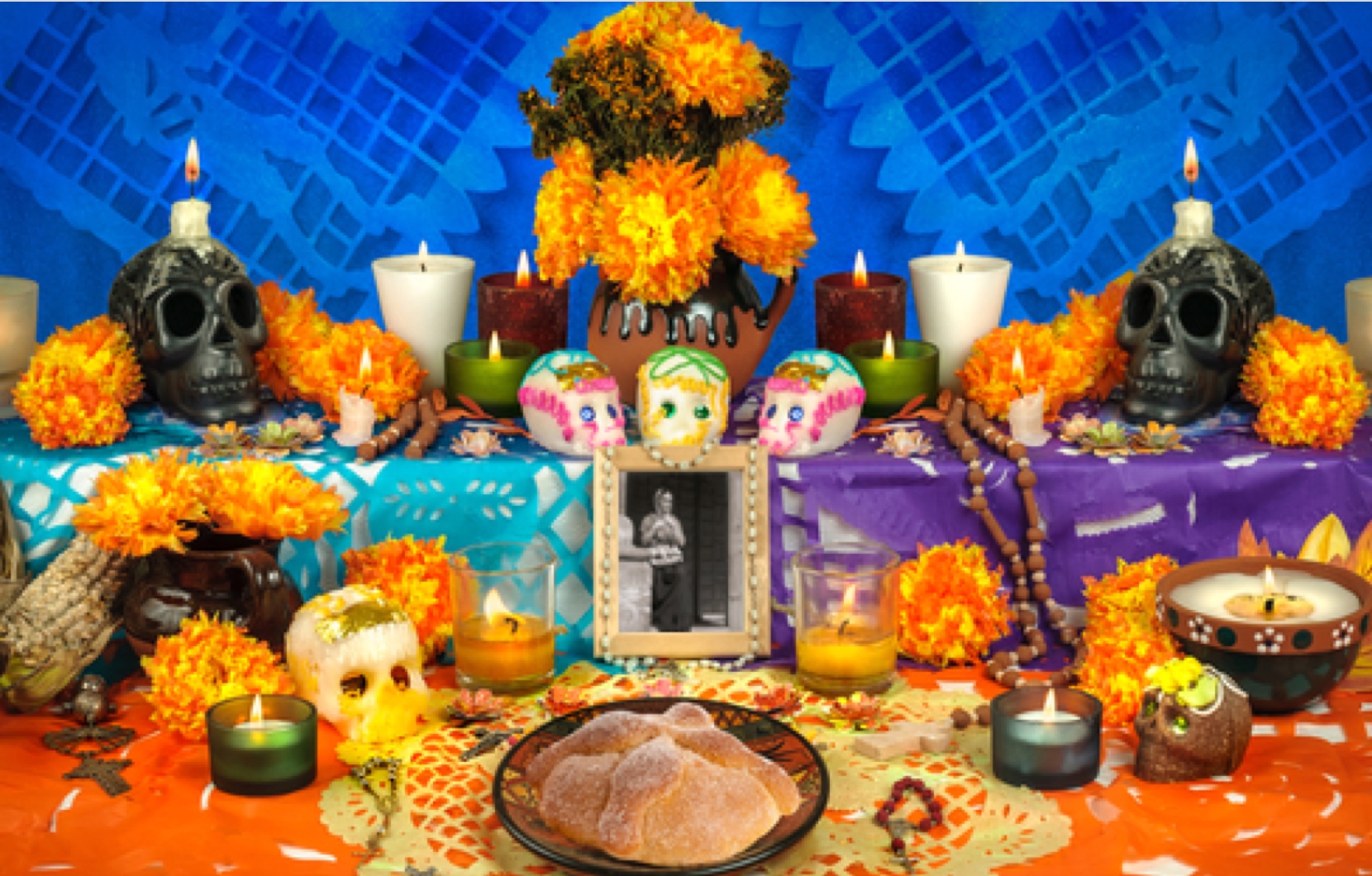
An ofrenda altar decorated with pan de muerto, sugar skulls, flowers, and other traditional offerings.
At the center of Día de los Muertos celebrations are the ofrendas, or offering altars. These elaborate shrines are dedicated to those who have passed, and serve both as a commemoration to the dead, and as a beacon for them. It is at the altar that the spirits of deceased loved ones will appear.
Altars are decorated with crosses, symbols of the saints, and a candle for each loved one who has passed. The altars are brightly decorated with fruit, candy, colorful figurines and jewelry, vibrantly colored flowers—representing life’s fragility—as well as salt and water to quench the thirst of tired spirts who have made the long journey to Earth.
Each year, Vidanta builds altars at their resorts to commemorate important figures from Mexican culture and history, as well as others. If you have the chance, you simply have to visit, and maybe leave an offering!
Mucbipollo
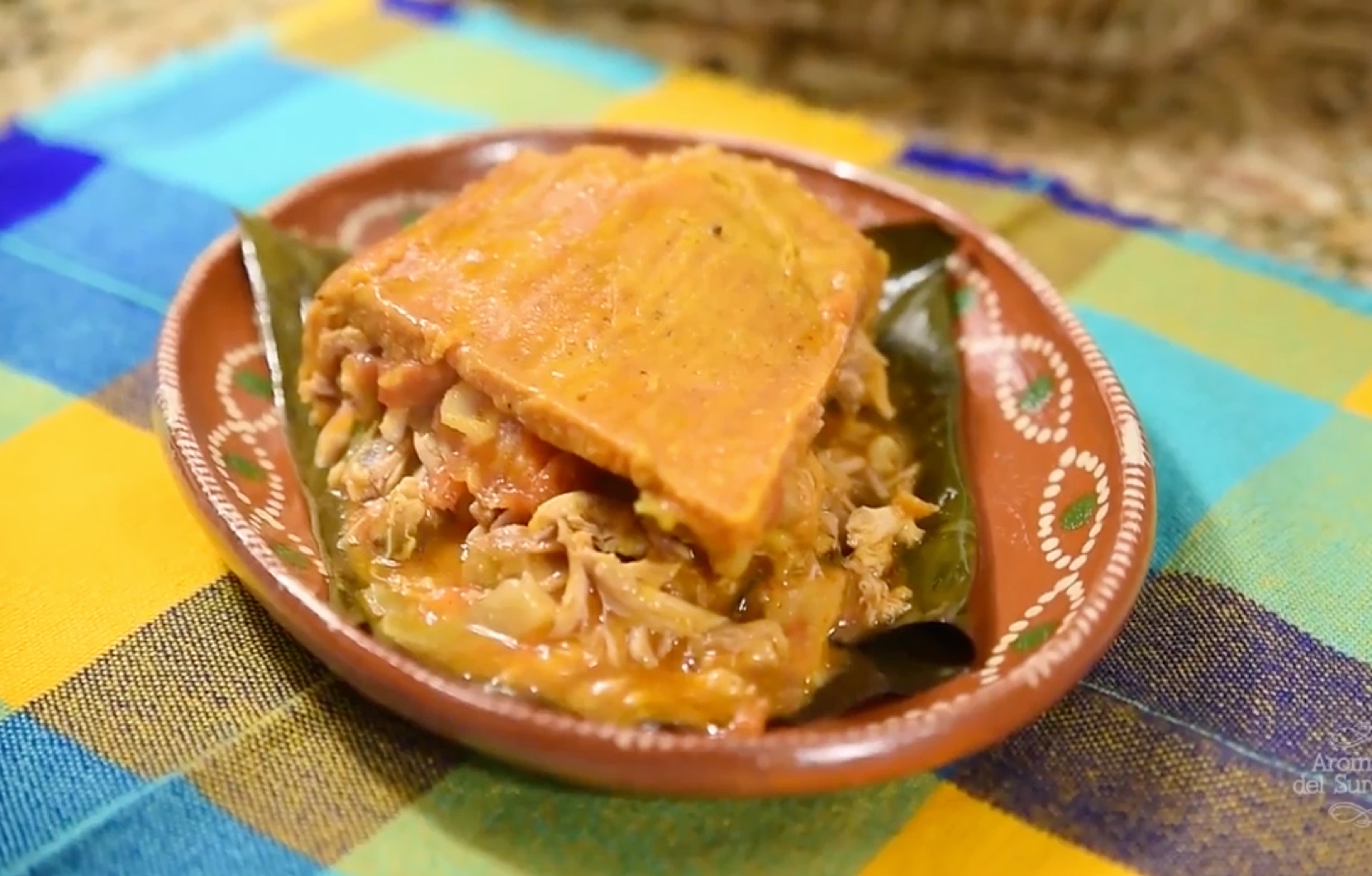
A slice of delicious mucbipollo. Photo courtesy of Aromas y Sabores Del Sureste Mexicano (ASSM)
The mucbipollo (or “pib”) is a large tamale made of corn flour dough and butter, stuffed with chicken and pork, and flavored with tomatoes and peppers. The corn cake is wrapped in banana leaves. You can cook the tamale in a traditional wood oven, but tradition insists that the best way is to build a pit oven in the courtyard of your home with embers and hot stones. By honoring the household in this way, your tamales will be blessed with deliciousness. You can taste mucbipollo at Riviera Maya and Acapulco.
Sugar Skulls
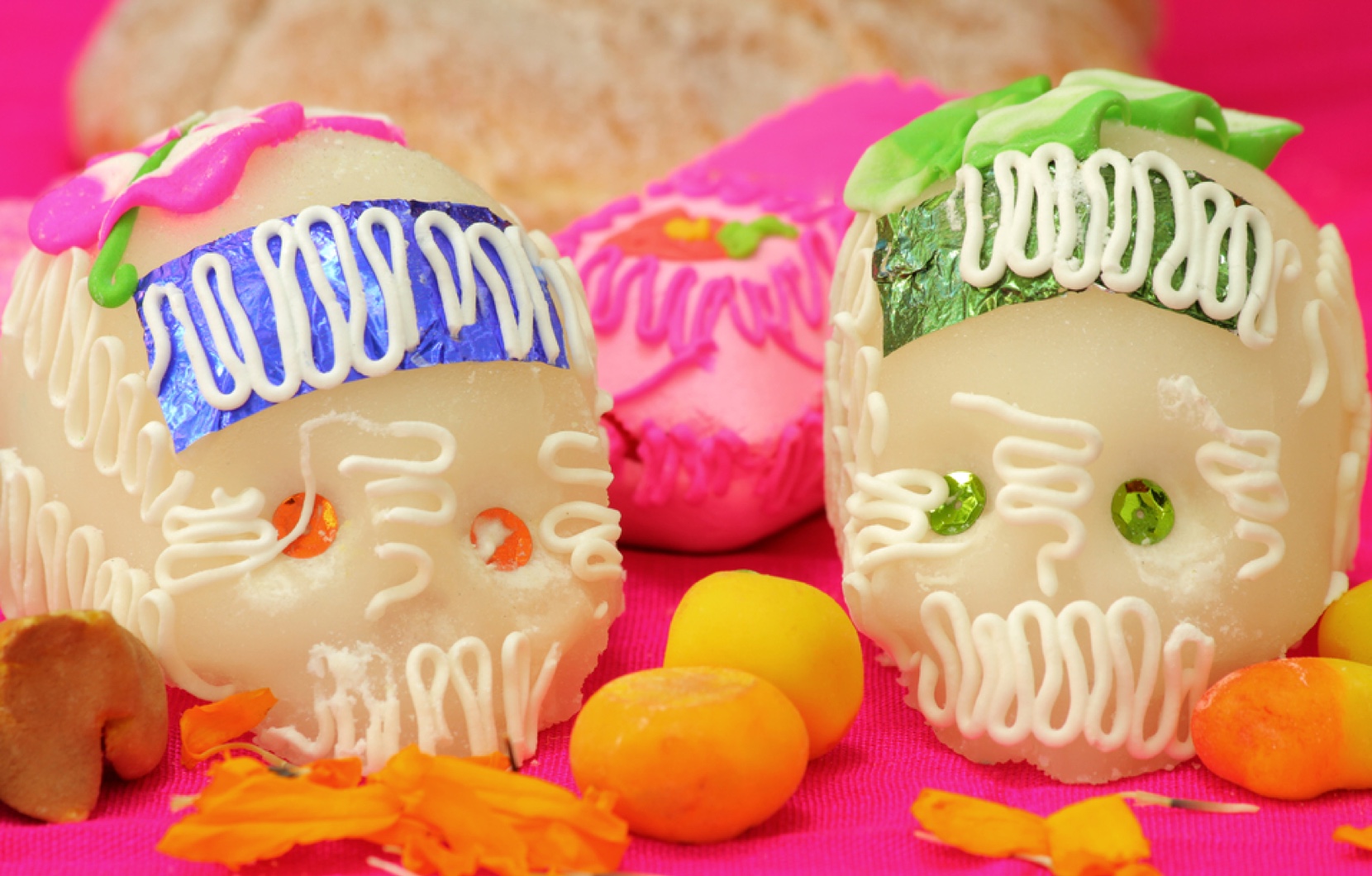
Traditional Sugar Skulls on an altar. Today, skulls appear in hard candy, chocolate bars, and even cookies!
Bright, elaborate, delicious, and a little spooky! Sugar skulls, also called calaveras, are fabulous traditional candies made from cane sugar, shaped into skulls, and fantastically decorating with frosting, fruit, and even feathers. Calaveras are a delight for children, who gobble them up or place them on the altar as an ofrenda for the spirits of children that have passed. Altar decoration is ancient in Mexico, but sugar art actually comes from Italian missionaries who visited the country around 400 years ago, making calaveras another great example of the cultural blending that makes this holiday so unique.
Pan de Muerto
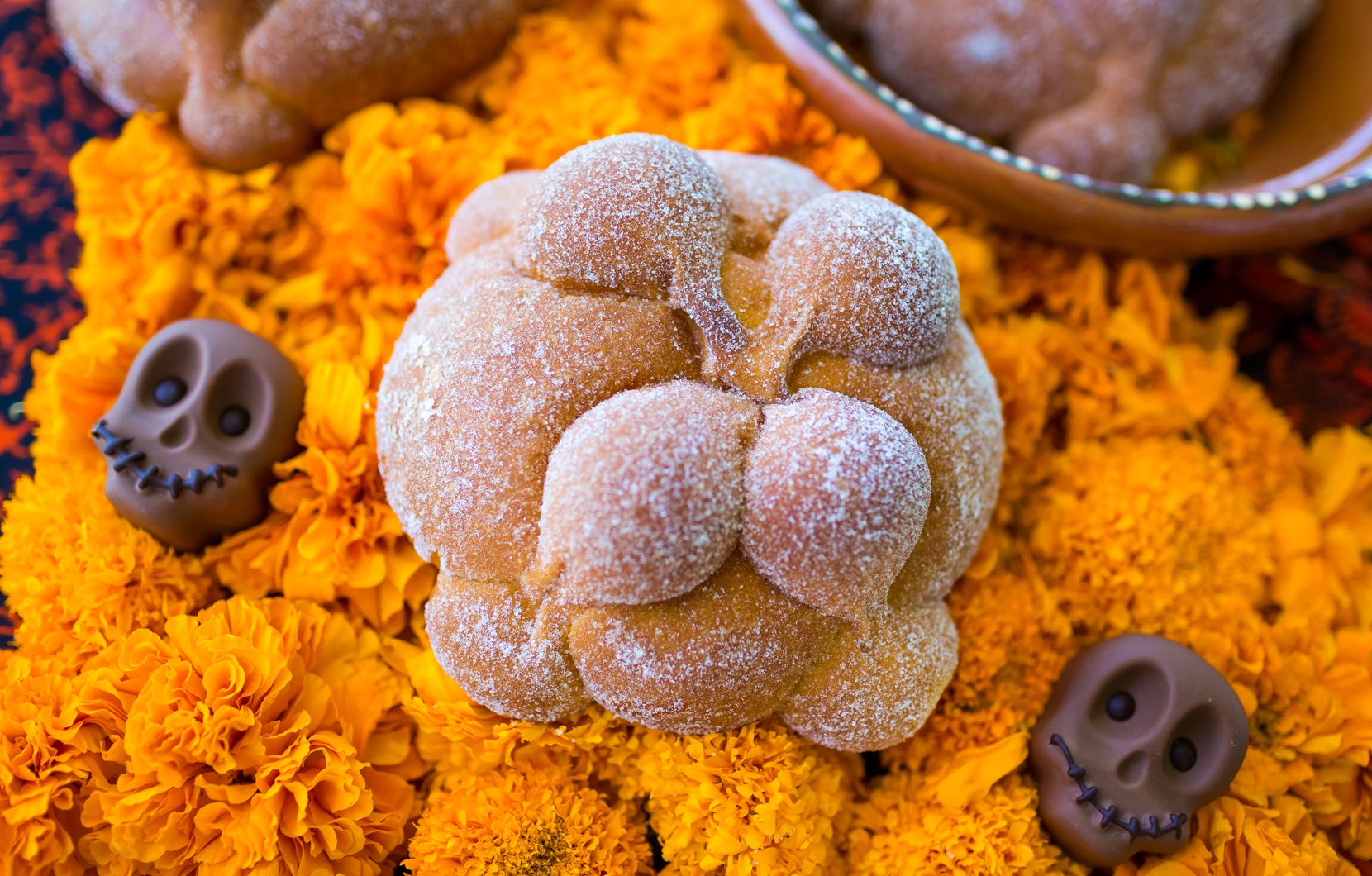
The raised ridges represent the bones of the dead.
Pan de muerto, round sweet buns baked in the weeks leading up to November 2nd, are full of special meaning. The buns are decorated with circles and ridges that represent the skull, shins, and arms of the deceased. The dough, which is sweet and soft, is flavored with orange blossom, a the taste meant to evoke fond memories of those passed. Pan de muerto has many regional variations, and you can try many of them at the Vidanta destinations!
Calavera Makeup
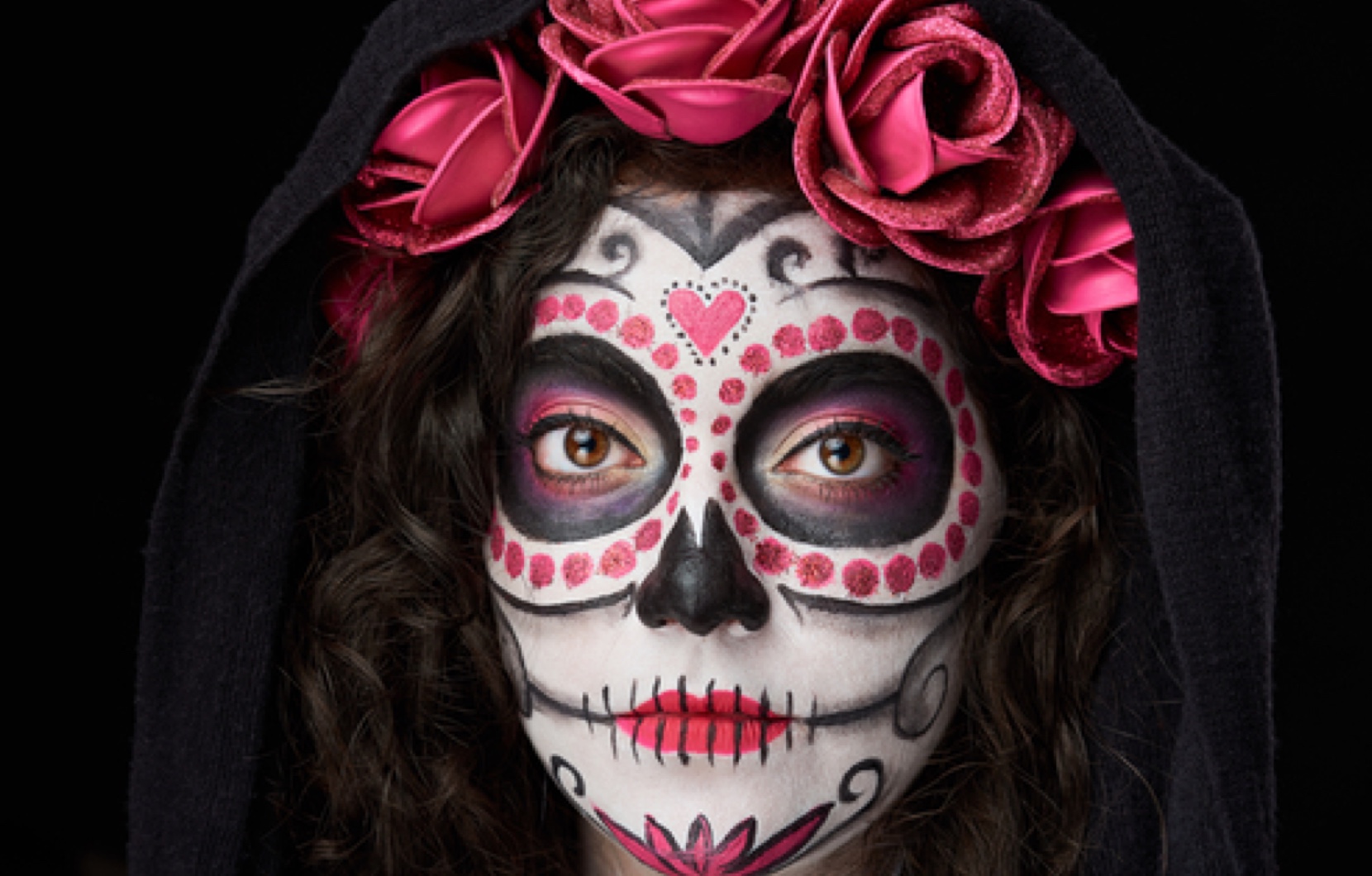
Colorful, vibrant, and haunting. Calvera makeup is an integral part of the holiday.
Perhaps the most iconic and internationally known symbol of Día de los Muertos is the skull face paint and fanciful costume worn by some celebrants. Skull makeup is a relatively recent tradition, but has become extremely popular as part of the holiday’s theme of celebrating and acknowledging death. The traditional costume—decorative skull makeup with stylized turn-of-the-century formal wear—actually stems from a famous cartoon by Mexican artist José Guadalupe Posada. The piece, now called La Calavera Catrina, has come to represent death as a unifying force—everyone, rich or poor, fancifully dressed or not, ends up in the same place. On Día de los Muertos, this is worth celebrating.


